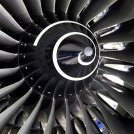
-
Content Count
48 -
Donations
$0.00 -
Joined
-
Last visited
Community Reputation
32 NeutralProfile Information
-
Gender
Male
-
Location
KNEW
Flight Sim Profile
-
Commercial Member
No
-
Online Flight Organization Membership
none
-
Virtual Airlines
No
Recent Profile Visitors
-

Top 70% of TDS 750 touchscreen not working C310
Captain Z replied to Captain Z's topic in The MILVIZ Support Forum
For those who might have the same problem, I found an answer from Milviz. It seems you have to uninstall the PMS50 GTN from the sim to get the TDS 750 to work in the C310. So if you have either the free or payed version of the PMS also installed, that's causing the issue. They seem to think it's an issue with TDS and PMS....but since I can switch between both of them on the fly in the arrow, without any issues, I think it may be something else. -

Top 70% of TDS 750 touchscreen not working C310
Captain Z posted a topic in The MILVIZ Support Forum
I have a weird problem. The top 70% of both the TDS GTN 750 touchscreens do not respond to clicks in my new C310. To make sure it wasn't the TDS itself, I loaded up the Just Flight Arrow, and it worked perfectly. Then I loaded up the SImworks R-14. The TDS worked perfectly. So it's just in the C310. The units, themselves, are actually working. I can move into map with the physical knob. But the top 70% of both screens remains un-clickable (making the TDS unusable). I remember FlyingFabio had the same issue in one of his preview streams, so he didn't use the TDS 750's, either. Anyone else with this problem, and a possible fix ? -
Hello,
I've recieved Bert's TBM mod to make the GTN work instead of the default G1000 but I'm reading that you have a fix for v2 I would very much like this too as I'm currently suffering a blank screen (not sure if related)
Email - virtualpilot@outlook.com
Tried to message - apparently you can't recieve them
-

What happens when your GPU gets hot?
Captain Z replied to Highmike's topic in Microsoft Flight Simulator (2020)
I thought I would answer the topic question. Your 1080ti, and most modern Nvidia GPU's have a thing called GPU Boost. It's job is to adjust your GPU's clock rate according to the power and cooling it receives. With more power and less heat, you get higher clocks. With less power and more heat, you get lower clocks. It operates independently of OCing, so even if you OC'd your GPU to 2000mhz, it will drop the clocks back to default or lower at certain temperatures. It's possible that the hotter weather is simply dropping your GPU's clock rate. Ambient temps will certainly affect it, even with good cooling. I have a 1080ti with a full water block running on a custom water loop, and it runs cooler in the winter than the summer. Given you notice the change when it's hotter, there's a chance this is why. It's also possible (but less likely) that the hotter weather is affecting your PSU, where a drop a power is affecting it. You can track your temps, clock rate, etc.....with an app like Afterburner, too see what's happening while you use it. -

I'm personally done with MSFS post 3rd patch..
Captain Z replied to Sesquashtoo's topic in Microsoft Flight Simulator (2020)
This is true. LOD has been an issue as well. The problem is they keep getting worse each patch. I've seen some mention that it might be changes to help with VR integration. I'm hoping it's just new release issues, and will get worked out. But, if that isn't the case (putting on the tinfoil hat for fun)...... Then my "shot in the dark" conspiracy theory is.....since Microsoft wants MSFS and it's 3rd party addons to run on PC and their new Xbox sX.... ....perhaps they want to be able to say that MSFS runs on the new Xbox sX just as well as a high end PC. Dialing back LOD so it looks and runs equally could help with that. Again, this is just musing a conspiracy theory, but I do so because LOD is slowly being reduced each patch. That's a strange bug that does something like that. If Asobo responds to people, and addresses the issue (like I think they will), we'll hopefully have their plan on fixing the issue. In the rare chance they stay silent on the issue.....well, we'll see. -

I'm personally done with MSFS post 3rd patch..
Captain Z replied to Sesquashtoo's topic in Microsoft Flight Simulator (2020)
I fired up MSFS and downloaded the patch as soon as I got home. Started in O'hare (been in and out of there a lot in sim) with a cub, took off and flew low level towards downtown Chicago. The ground was literally popping in ahead of me (200 LOD setting), and disappearing behind me at the same distance. After reaching the waterfront, I turned around and went back to the airport. It looks really bad, now. Even if you fly airliners exclusively, This will certainly be noticed on approaches, and sully the experience. -

I'm personally done with MSFS post 3rd patch..
Captain Z replied to Sesquashtoo's topic in Microsoft Flight Simulator (2020)
I haven't flown after the new patch yet, but I clearly see the problem in this photo. You can clearly see the line where proper ground rendering ends, and a hodgepodge of mush begins, just before the cloud shadows. That does look pretty bad. -

Sim vs Trailer Comparaison problem
Captain Z replied to Noooch's topic in Microsoft Flight Simulator (2020)
I suppose the best way to explain it would be that the trailer does not represent the current MSFS, but a future version of MSFS they hope to have one day. -

Cirrus SR22 Trim shoots to 100 nose up
Captain Z replied to M3Stang's topic in Microsoft Flight Simulator (2020)
I see it in the SR22 and TBM all the time. -
I've seen it in both the TBM and the SR22. It's possible to fight it by pushing almost full forward on the stick and throttling back, to prevent the overspeed/g to the aircraft. After a few minutes of fighting to keep the plane level, it goes away. I only see it happen once per flight, never multiple times. I have no idea what causes it.
-
I picked up KDEN, and thought I would share my experience. I had the MSFS Premium KDEN before. Flightbeam's KDEN looks way better, in my opinion. My performance is about 5-8 FPS better with this KDEN, as compared to the MS premium version. I posted a screenshot here - https://www.avsim.com/forums/topic/583141-kden-in-the-morning/
-
This explains it well - " The answer is frametime variances. “Frametime” denotes how long a single frame takes to render. “Framerate” is the totaled average of each frame’s render time within a one second period. At 144Hz, a single frame takes 6.9ms to display (the number of which depends on the max refresh rate of the display, see here), so if the framerate is 144 per second, then the average frametime of 144 FPS is 6.9ms per frame. In reality, however, frametime from frame to frame varies, so just because an average framerate of 144 per second has an average frametime of 6.9ms per frame, doesn’t mean all 144 of those frames in each second amount to an exact 6.9ms per; one frame could render in 10ms, the next could render in 6ms, but at the end of each second, enough will hit the 6.9ms render target to average 144 FPS per. So what happens when just one of those 144 frames renders in, say, 6.8ms (146 FPS average) instead of 6.9ms (144 FPS average) at 144Hz? The affected frame becomes ready too early, and begins to scan itself into the current “scanout” cycle (the process that physically draws each frame, pixel by pixel, left to right, top to bottom on-screen) before the previous frame has a chance to fully display (a.k.a. tearing). G-SYNC + V-SYNC “Off” allows these instances to occur, even within the G-SYNC range, whereas G-SYNC + V-SYNC “On” (what I call “frametime compensation” in this article) allows the module (with average framerates within the G-SYNC range) to time delivery of the affected frames to the start of the next scanout cycle, which lets the previous frame finish in the existing cycle, and thus prevents tearing in all instances. And since G-SYNC + V-SYNC “On” only holds onto the affected frames for whatever time it takes the previous frame to complete its display, virtually no input lag is added; the only input lag advantage G-SYNC + V-SYNC “Off” has over G-SYNC + V-SYNC “On” is literally the tearing seen, nothing more. "
-
You want G-sync enabled in NCP, Under manage 3d settings, you also want V-sync ON. In game settings (MSFS settings), you want V-sync off.






